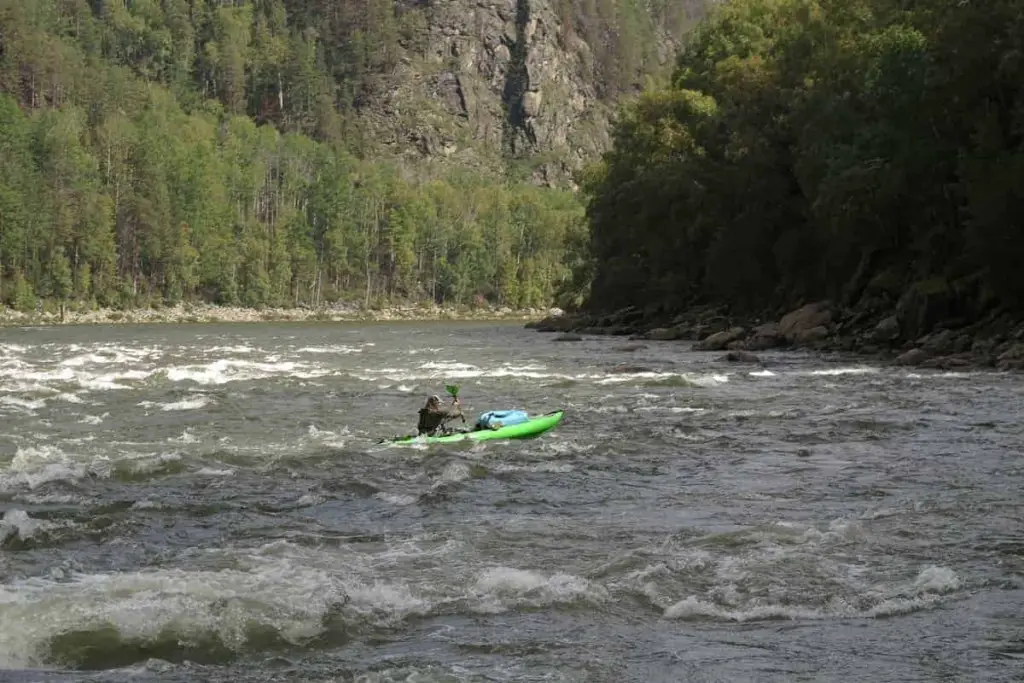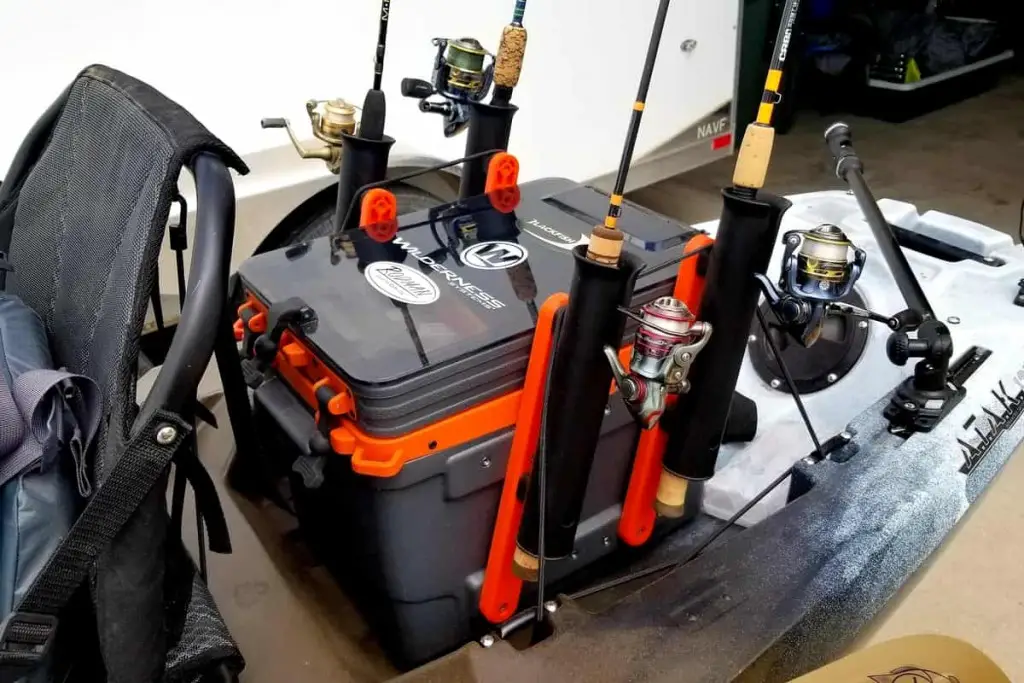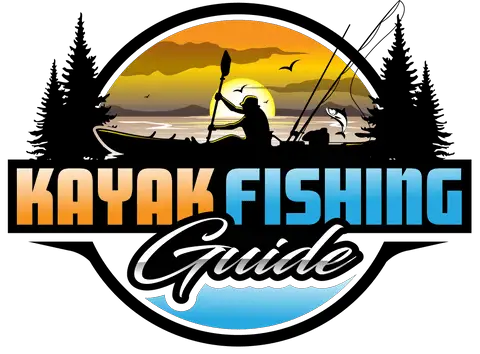
Some people kayak for the thrill of facing challenging rapids. Others use their kayak for fishing. But what if you could use one kayak for both these activities?
It is possible to find a kayak that works for fishing and handling rough waters. Most kayaks are meant for one purpose, but multi-purpose kayaks provide flexibility. A multi-purpose kayak balances different features to allow for a variety of uses.
Before you head out for the nearest river, make sure you are bringing the right kayak. All kayaks have features that make them well suited for specific uses. Read on to learn how to evaluate these traits and choose the best kayak for you.
Choosing A Multi-Purpose Kayak
If you want variety in your kayaking experience, you need to be very selective in choosing a kayak.
There are some kayaks are great for multiple uses, including for both fishing and rapids. These kayaks offer a balance of the following characteristics.
- Storage
- Stability
- Maneuverability
There are additional factors to consider when buying a kayak. However, these are the most important when it comes to picking a kayak for multiple uses.
Storage for Fishing Equipment

Fishing requires its own unique equipment. If your kayak doesn’t have adequate storage space, you won’t be able to transport your fishing gear.
The storage system I use is the Wilderness Systems Kayak Krate. This krate has plenty of storage for your tackle, secures readily to almost any kayak, and has four adjustable rod holders.
Besides, a successful fishing trip often means bringing fish home with you. Imagine going through all the effort of catching a fish only to find that your kayak offers no place to keep it.
To avoid this, find a kayak with functional storage space. The amount of space you need will depend on your preferences (and how many fish you plan to catch).
- If you need other ideas on keeping your catch fresh on your kayak, check out my other article Where to Keep Fish on a Kayak
Kayaks can have multiple forms of storage. Some have storage space in the front, back, or in both locations. Others have storage space specially designed to prevent your stored items from getting wet.
Only you know how much storage you will need. So, keep your gear list in mind when shopping for your kayak.
Kayak Stability
There are two types of kayak stability.
- Primary Stability – Stability when kayaking in relatively calm waters
- Secondary Stability – Stability when kayaking in rough waters
When you are fishing and get a bite, you are focused on reeling in the fish. During this moment, you don’t want to be worried about the rocking of your kayak. At the very least, the odds of you pulling the fish out of the water should be higher than the odds of you falling in.
The main factor in kayak stability is the width. Generally, the wider a kayak is, the more stability it has.
The shape of the kayak’s hull also plays a role. A flatter hull is less prone to rocking in calm waters. Flat hulls are also known as planing hulls and are often used for fishing.
Unfortunately, many kayaks with planing hulls are not stable on rapids. This is the challenge of choosing a multi-purpose kayak. You need to be able to balance multiple needs at once.
Your best hull option is called a shallow V hull. Shallow V hulls are a hybrid variety that combines the flat hull with the v-shaped hull. These hulls offer a balance between the two types of kayak stability.
Maneuverability in Rapids
Kayaking on rapids is a fast-paced experience requiring skill in avoiding danger. To help maintain safety, you need a kayak that you can maneuver easily.
Quick turns and split-second adjustments are critical when facing whitewater. In these scenarios, you will need to dodge rocks and other potentially harmful elements.
To do so it helps to have a shorter kayak. Short kayaks are not great for overall speed. However, they are the best option for making sharp turns.
Common Kayaks and Features
You are in the market for a multi-use kayak. So, why bother learning about kayaks intended for a one purpose?
As you search for a unique multi-use kayak, it is helpful to know about general kayak features. After all, a multi-purpose kayak simply combines elements of more conventional kayaks.
By recognizing some of the more common kayak features, you will know which features to look for in a multi-use kayak. As you might expect, there are multiple types of kayaks. But there are two broad kayak categories to mention first.
Two Main Kayak Categories
- Sit-On – The kayaker sits on top of the kayak.
- Easier to get on and off
- Likely less storage space
- Likely more overall weight
- Sit-In – The kayaker sits in a cockpit-like area. The legs of the kayaker are inside of the kayak rather than on top.
- Faster
- Easier to control
- Better for rough waters
Sit-on kayaks are a better option for newcomers. This is because they are easier to get onto. Besides, it is also easier to get out when your kayak capsizes.
But if you are at a level where you are hoping to kayak on rapids and fish, you are probably not a beginner. In this case, you should look for sit-in kayaks.
Below are two lists containing some of the most common single-use kayaks.
Common Kayaks for Calm Waters
- Recreational Kayak
- Good stability
- Limited Storage
- Not great for extended trips or rapids
- Day-Touring Kayak
- Average storage space
- Typically, longer and more narrow
- Higher speed
- Sea Kayak
- Great for long trips
- Highest speed
- Reduced stability
While the kayaks above are better for calmer waters, there are kayaks explicitly designed for whitewater. Here are the common whitewater kayaks:
Common Kayaks for Whitewater
- River Runner
- On the longer side (8.5-10’)
- Good for moderate rapids
- Good Stability
- Creekboat
- Shorter (8’ or less)
- Resurfaces quickly
- Good for intense rapids
- Playboat
- Great maneuverability
- Short length
- Not meant for long-distance trips
There are also several terms commonly used to describe kayaks and how they move through the water.
You now know the features you should be looking for in a multi-use kayak. You are also familiar with some common kayak varieties. By combining this information, you are prepared to select the kayak that will suit you.
But as a final note, let’s cover some of the dangers of kayaking in extreme conditions. Safety is most important, so you need to know what you’re up against.
Minimizing the Dangers of Kayaking on Rapids
There are some risks when it comes to kayaking on rapids. You should be aware of these even before selecting your kayak.
Hitting Rocks
When kayaking on a river, there are many opportunities to run into rocks. Obviously, this can jostle and even damage your kayak.
Consider the materials of your kayak. Most are made of plastic. This plastic allows your kayak to flex and bounce off the rocks without breaking.
If your kayak has a rudder, you will want to put it up before kayaking through rocks. If you don’t, your rudder will likely break.
Capsizing
Capsizing is just about the last thing you want to do when kayaking. Not only will you be in the water, but you may also lose some gear.
This is where kayak stability comes in. A wider kayak is less prone to tipping, reducing the capsizing risk. Some of the kayaks that are thinner and built for speed will flip over more easily.
Also, you will want to consider covered storage for your kayak. Many kayaks have small compartments that are sealed with hatches. When your possessions are stored in a closable space, you are less likely to lose them if you capsize.
Conclusion
Kayaking can be an exciting weekend adventure. But if you want to get the most out of your kayaking experience, you need the proper equipment. By carefully evaluating common kayak features, you can find one that you can use both for fishing and shooting the rapids.
Have fun and be safe out there!
